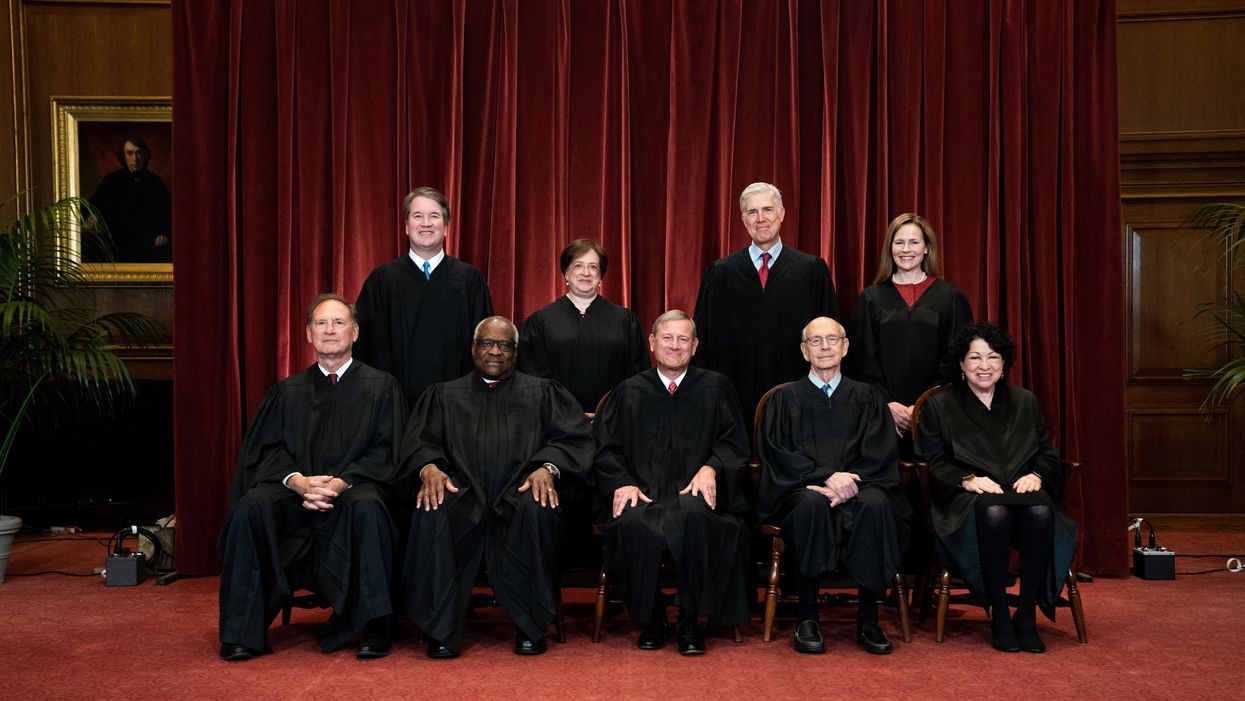Goldstone’s most recent book is "On Account of Race: The Supreme Court, White Supremacy, and the Ravaging of African American Voting Rights."
The Roberts court’s record for safeguarding voting rights is hardly impressive. Rather than view access to the ballot box as fundamental to a healthy democracy, the Supreme Court’s conservative majority prefers to pretend that blatant attempts to deny the vote to poorer, nonwhite Americans are “political” activities and therefore beyond the purview of what Alexander Hamilton assured Americans would be the people’s branch of government.
Whether in Shelby County v. Holder, where Chief Justice John Roberts blithely disemboweled the 1965 Voting Rights Act, or more recently, when a 5-4 majority (which ironically did not include Roberts) refused to void an Alabama redistricting plan that minimized the influence of Black voters, the court has sided with an aggressive conservative base that aims to keep control of government by limiting the rights of groups that vote against them.
It therefore came as a bit of surprise when the court refused, at least for the moment, to grant emergency motions by Republicans in Pennsylvania and North Carolina to reinstate gerrymandered redistricting maps that had been disallowed by their state’s supreme courts. The Pennsylvania petition was rejected because the case was already being heard in federal court, but no such technicality existed in the North Carolina case.
Although the majority did not issue a written opinion, Samuel Alito wrote a dissent in which Neil Gorsuch and Clarence Thomas joined. Brett Kavanaugh accepted Alito’s reasoning but voted with the majority because he thought primary elections in the two states were too near at hand to be implementing a new districting map.
North Carolina Republicans advanced a novel and unprecedented argument, which Alito and his fellows accepted: Because Article I, Section 4 of the U.S. Constitution specifically states, “The Times, Places and Manner of holding Elections for Senators and Representatives, shall be prescribed in each State by the Legislature thereof ” (Alito’s italics), state supreme courts were not empowered to alter any redistricting plan approved by a state’s legislature.
“The applicants will be irreparably harmed if a stay is not granted because they will be deprived of their constitutional prerogative to draw the congressional map in their State,” he concluded. But Alito was forced to admit that the North Carolina court did not arbitrarily overrule the General Assembly; rather, it “justified its actions on the ground that the General Assembly’s maps constituted partisan gerrymanders and thus violated a congeries of state constitutional provisions.” (My italics.).
In other words, the North Carolina Supreme Court ruled that because its legislature had violated the state Constitution in drawing a discriminatory redistricting map, it had the power to declare it void, a power commonly referred to as “judicial review.” But Alito and his brethren countered that because that specific power is not granted to state supreme courts in Article I, Section 4, even the most egregious gerrymander should be allowed to stand. (One is forced to wonder if the dissenting justices would have been so cavalier if it had been Republicans who were being gerrymandered rather than Democrats.)
What Alito seems to have forgotten is that another court has assumed the power to act as a constitutional check on the legislature despite not being granted that power in the Constitution.
His.
The power of the Supreme Court to overrule Congress and either strike down a law or alter its application appears nowhere in Article III nor anywhere else in the Constitution. As the late Justice Antonin Scalia once noted, “The Constitution of the United States nowhere says that the Supreme Court shall be the last word on what the Constitution means, or that the Supreme Court shall have the authority to disregard statutes enacted by the Congress of the United States on the ground that, in the Court’s view, the statutes do not comport with the Constitution. It doesn’t say that anywhere in the Constitution. We made it up.”
Made it up indeed. At no point during the Constitutional Convention did the delegates come out in favor of allowing the Supreme Court to overturn a law passed by Congress and signed by the president. They did briefly discuss a “council of revision” wherein Supreme Court justices and the president would approve or reject bills passed by Congress, but that notion was rejected out of hand. In fact, the two most respected legal theorists of the day, William Blackstone and Baron de Montesquieu, both of whom had been widely read by the delegates, each counseled that the judiciary should never be able to overrule the legislature. Judicial review wasn’t backdoored into American jurisprudence until 1803, when Chief Justice John Marshall in Marbury v. Madison wrote, “It is emphatically the duty of the Judicial Department to say what the law is.”
But to Scalia, who often boasted of his “textualist” philosophy, Marshall’s convenient end run around the judiciary’s limitations was totally appropriate. “Now, we made it up very sensibly,” Scalia added, “because we reasoned that a Constitution is a law, sort of a super-law … and determining what the law means is the job of courts.”
Judicial review is now the most potent weapon in the court’s arsenal and no justice would dare suggest that it was inappropriately acquired. Nonetheless, Alito and his fellow dissenters would deny to states the very power that he and his fellow conservatives have wielded to such advantage in cases such as Shelby County and Citizens United.
Lest comfort be taken that Alito’s dissent was a minority opinion, Kavanaugh is anxious to revisit this issue in a future case and Amy Coney Barrett could hardly be considered a reliable advocate for voting rights and racial justice. It isn’t unlikely that when Justices Kavanaugh and Barrett, both of whom for the moment seem anxious to demonstrate their appointments were not illegitimate, become more comfortable on the high bench, their seeming reasonableness and openness to alternative viewpoints will evaporate.
If that occurs, the United States will take yet another step back from free and fair elections and the democracy it claims to be.




















